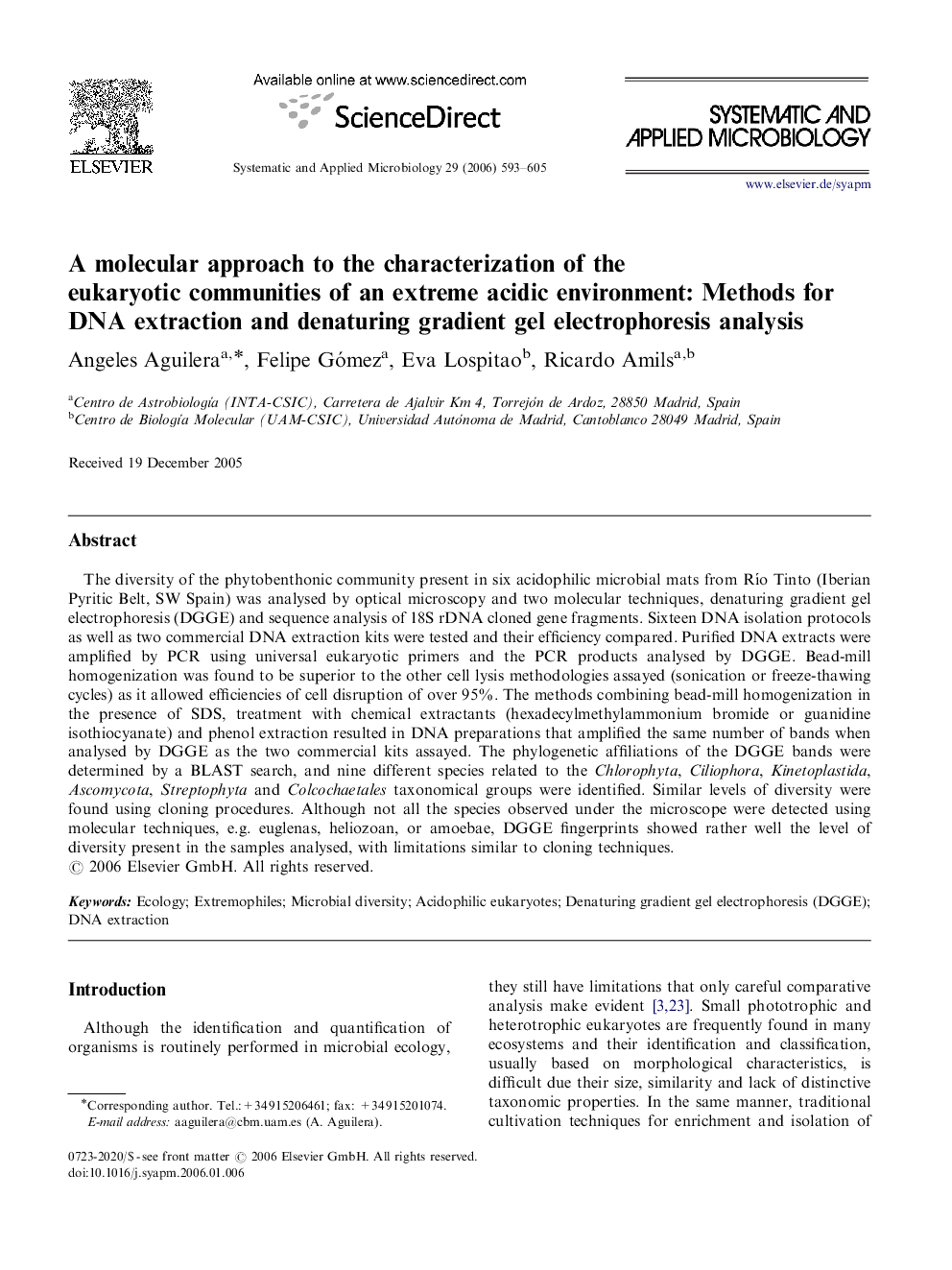| کد مقاله | کد نشریه | سال انتشار | مقاله انگلیسی | نسخه تمام متن |
|---|---|---|---|---|
| 2063661 | 1076706 | 2006 | 13 صفحه PDF | دانلود رایگان |

The diversity of the phytobenthonic community present in six acidophilic microbial mats from Río Tinto (Iberian Pyritic Belt, SW Spain) was analysed by optical microscopy and two molecular techniques, denaturing gradient gel electrophoresis (DGGE) and sequence analysis of 18S rDNA cloned gene fragments. Sixteen DNA isolation protocols as well as two commercial DNA extraction kits were tested and their efficiency compared. Purified DNA extracts were amplified by PCR using universal eukaryotic primers and the PCR products analysed by DGGE. Bead-mill homogenization was found to be superior to the other cell lysis methodologies assayed (sonication or freeze-thawing cycles) as it allowed efficiencies of cell disruption of over 95%. The methods combining bead-mill homogenization in the presence of SDS, treatment with chemical extractants (hexadecylmethylammonium bromide or guanidine isothiocyanate) and phenol extraction resulted in DNA preparations that amplified the same number of bands when analysed by DGGE as the two commercial kits assayed. The phylogenetic affiliations of the DGGE bands were determined by a BLAST search, and nine different species related to the Chlorophyta, Ciliophora, Kinetoplastida, Ascomycota, Streptophyta and Colcochaetales taxonomical groups were identified. Similar levels of diversity were found using cloning procedures. Although not all the species observed under the microscope were detected using molecular techniques, e.g. euglenas, heliozoan, or amoebae, DGGE fingerprints showed rather well the level of diversity present in the samples analysed, with limitations similar to cloning techniques.
Journal: Systematic and Applied Microbiology - Volume 29, Issue 7, 1 November 2006, Pages 593–605